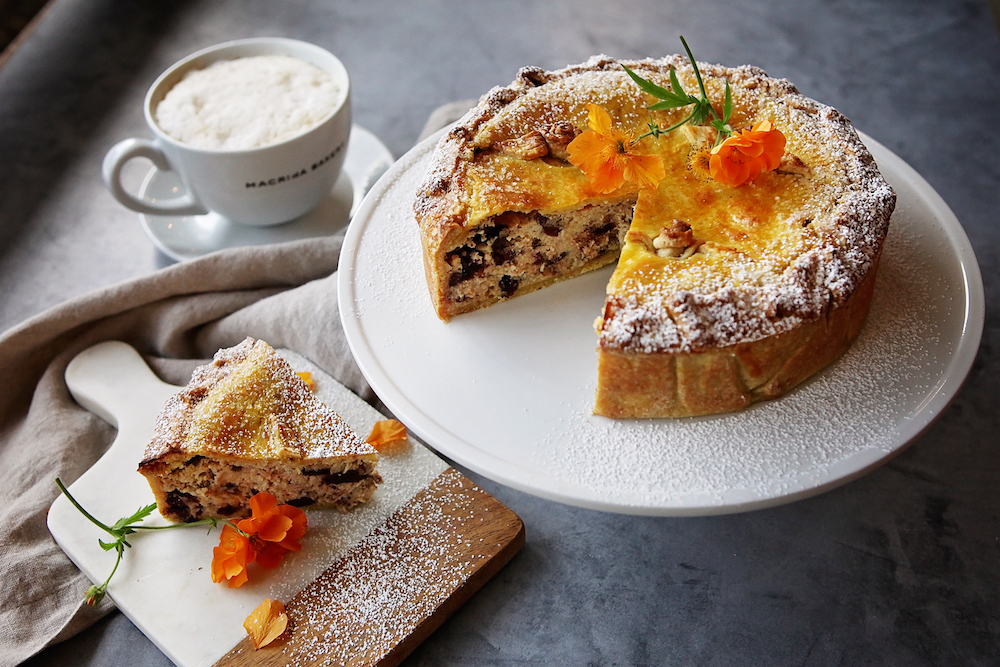 Having lived in the North End of Boston for three years, I had the pleasure of frequenting some of the best Italian bakeries — the inspiration behind this tart. This rendition is adapted from a beloved recipe in our first cookbook. The Italian pasta frolla dough is versatile and straightforward to make. You’ll find yourself dreaming up other rustic tarts that it would serve well. My favorite filling combines rich ricotta cheese, dried cranberries, hazelnuts and bittersweet chocolate chips. However, feel free to swap out the dried fruit and nuts as whimsy or inspiration strikes. Fresh berries and a glass of Vin Santo make the perfect accompaniments to this lovely Italian tart.
Having lived in the North End of Boston for three years, I had the pleasure of frequenting some of the best Italian bakeries — the inspiration behind this tart. This rendition is adapted from a beloved recipe in our first cookbook. The Italian pasta frolla dough is versatile and straightforward to make. You’ll find yourself dreaming up other rustic tarts that it would serve well. My favorite filling combines rich ricotta cheese, dried cranberries, hazelnuts and bittersweet chocolate chips. However, feel free to swap out the dried fruit and nuts as whimsy or inspiration strikes. Fresh berries and a glass of Vin Santo make the perfect accompaniments to this lovely Italian tart.

Printable PDF of this recipe here.
Makes one 7-inch tart; serves 6


PASTA FROLLA DOUGH
2½ cup unbleached all-purpose flour
⅓ cup granulated sugar
½ tsp salt
¼ tsp ground anise
10 Tbsp (1¼ sticks) unsalted butter, chilled and cut into ½-inch cubes
1 egg
1 egg yolk
1 tsp vanilla extract
2 Tbsp heavy cream
FILLING
⅓ cup dried cranberries
2 cups seasonal berries
3¾ cup whole milk ricotta
½ cup granulated sugar
1 Tbsp unbleached all-purposed flour
¼ tsp salt
1½ tsp vanilla extract
1 Tbsp orange zest
4 egg yolks
¼ cup hazelnuts, roasted and coarsely ground
½ cup bittersweet chocolate chips
1 Tbsp unbleached all-purposed flour
1 egg + 1 tsp watter for egg wash
2 Tbsp raw sugar (Turbinado)



PASTA FROLLA DOUGH
In the bowl of a stand mixer, sift together the flour, sugar and salt. Add the ground anise and mix until well combined. Place bowl on mixer, and fit with the paddle attachment. On low speed, gradually add the butter cubes. Continue mixing until the texture resembles coarse crumbs.
In a separate bowl, whisk together the egg, egg yolk, vanilla extract and heavy cream. With the mixer on low speed, slowly pour the egg mixture into the flour mixture. Mix just until the dough comes together, about 30 seconds.
Transfer the dough onto a clean surface. Divide it into two portions: one larger and the other about a third of the size. Shape each portion into a flat disk. Wrap each disk in plastic wrap and refrigerate for at least 1 hour.
On a floured surface, roll out the larger dough disk into an 11-inch circle with a thickness of ⅛-inch. Carefully transfer it to a 7-inch x 1½-inch cake pan, pressing into the bottom and up the sides. Ensure there’s a ½-inch overhang around the top edges of the pan.
Roll out the smaller dough disk into a 7-inch circle, also with a thickness of ⅛-inch. Cut two 2-inch vents in this top layer of dough. Set the dough-lined cake pan aside as you make the filling.
FILLING
Rinse the dried cranberries under water to rehydrate them. Set aside.
In a medium bowl, combine the ricotta, sugar, flour, salt, vanilla extract and orange zest. This can be mixed by hand or using a stand mixer until combined well.
Gradually add the egg yolks, ensuring each yolk is fully incorporated before adding the next. Gently fold in the rehydrated cranberries, ground hazelnuts, and chocolate chips, making sure they are evenly distributed throughout the mixture.
In a seperate small bowl, whisk together the egg and water to make the egg wash.
Transfer the filling into the dough-lined cake pan, smoothing the top to ensure it’s level. Top the filling with the 7-inch pasta frolla circle. Brush the perimeter of the top dough with egg wash. Fold the ½-inch overhang from the base dough over the top dough, pressing gently to seal the tart.
Brush the entire top of the tart with the remaining egg wash and sprinkle with raw sugar. If you have excess dough, you can roll it out and cut decorative roses or other designs and place them on top of tart.
Refrigerate the assembled tart for 30 minutes.
Preheat the oven to 325°F.
Bake the tart for 50 to 55 minutes, or until the crust turns a golden brown and the filling is set.
Allow the tart to cool for at least 2 hours before serving. Enjoy with fresh berries and a glass of Vin Santo!
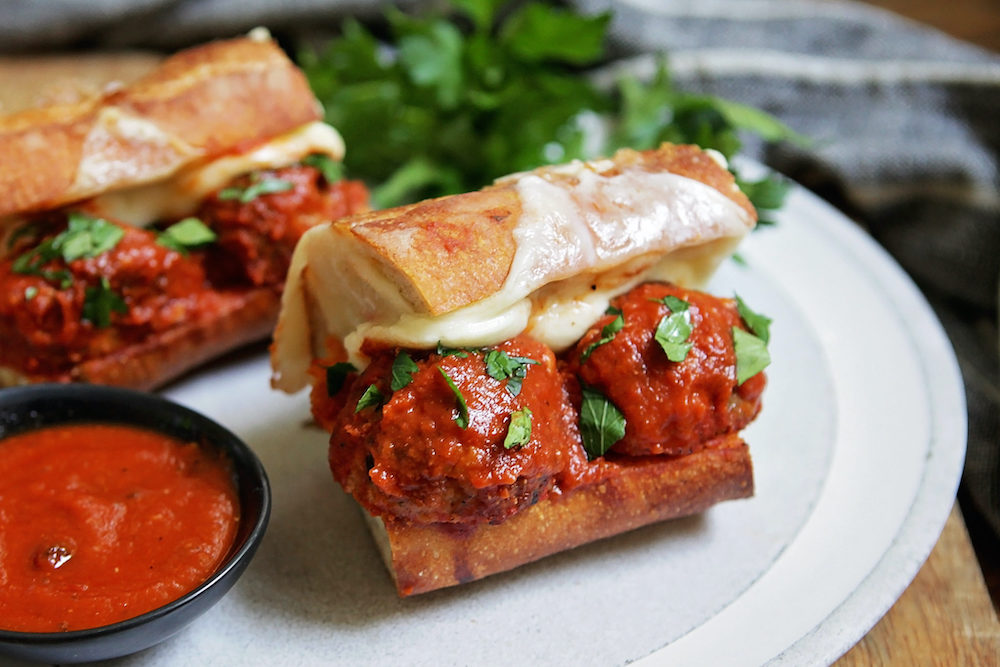

 At the end of the workday, Corrina returns home to her first family. Hailing from a large Italian-American family, she has always found meals to be central to family life and takes pleasure in hosting meals at her home and sharing food with her extended family.
At the end of the workday, Corrina returns home to her first family. Hailing from a large Italian-American family, she has always found meals to be central to family life and takes pleasure in hosting meals at her home and sharing food with her extended family.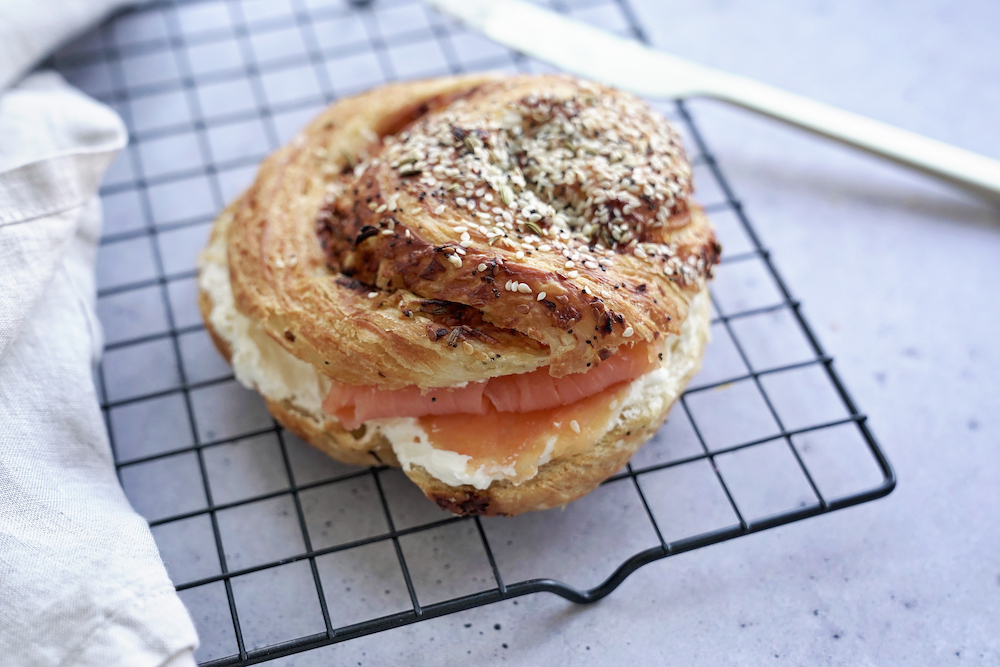 Corrina excels at transforming Macrina’s leftover breads into tasty appetizers. “Butter boards are an excellent starter. Basically, you soften butter and add whatever you like. Roasted garlic is great, as is lemon dill,” says Corrina. She creates crostini with old bread by slicing it, brushing both sides with olive oil, and baking them at 350°F for 10–15 minutes. The crostini are perfect for dipping into flavored butters.
Corrina excels at transforming Macrina’s leftover breads into tasty appetizers. “Butter boards are an excellent starter. Basically, you soften butter and add whatever you like. Roasted garlic is great, as is lemon dill,” says Corrina. She creates crostini with old bread by slicing it, brushing both sides with olive oil, and baking them at 350°F for 10–15 minutes. The crostini are perfect for dipping into flavored butters.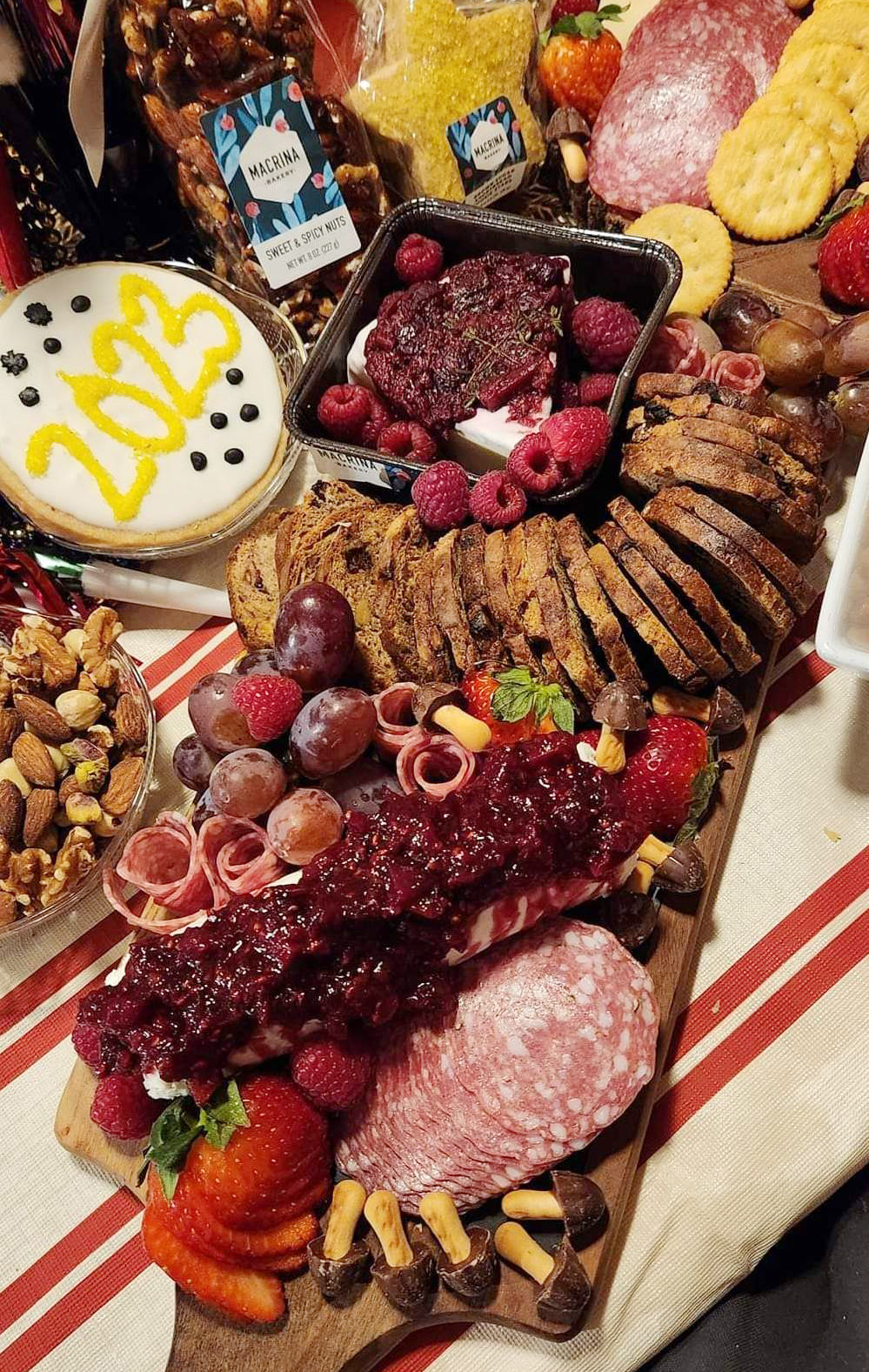 Crostini (or
Crostini (or 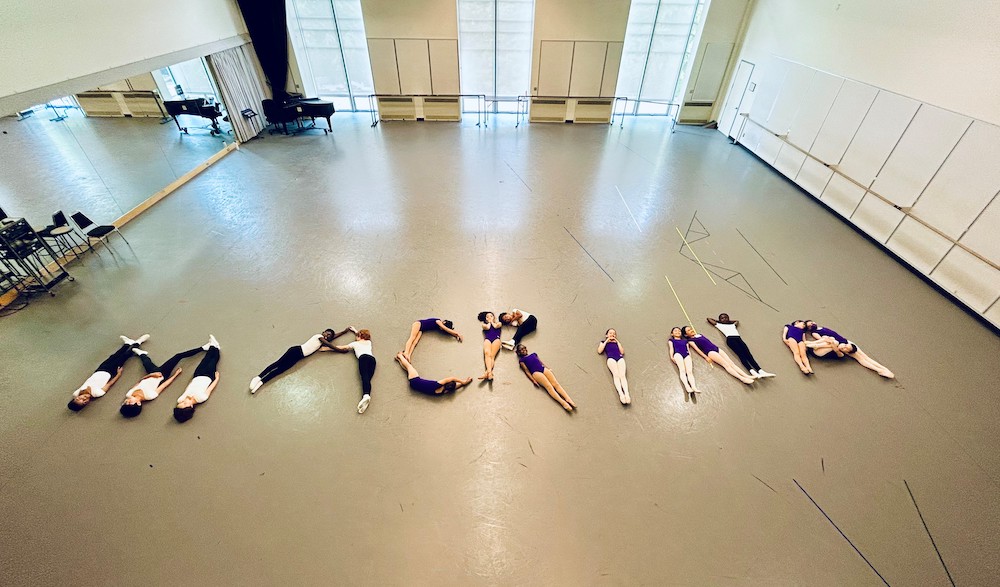
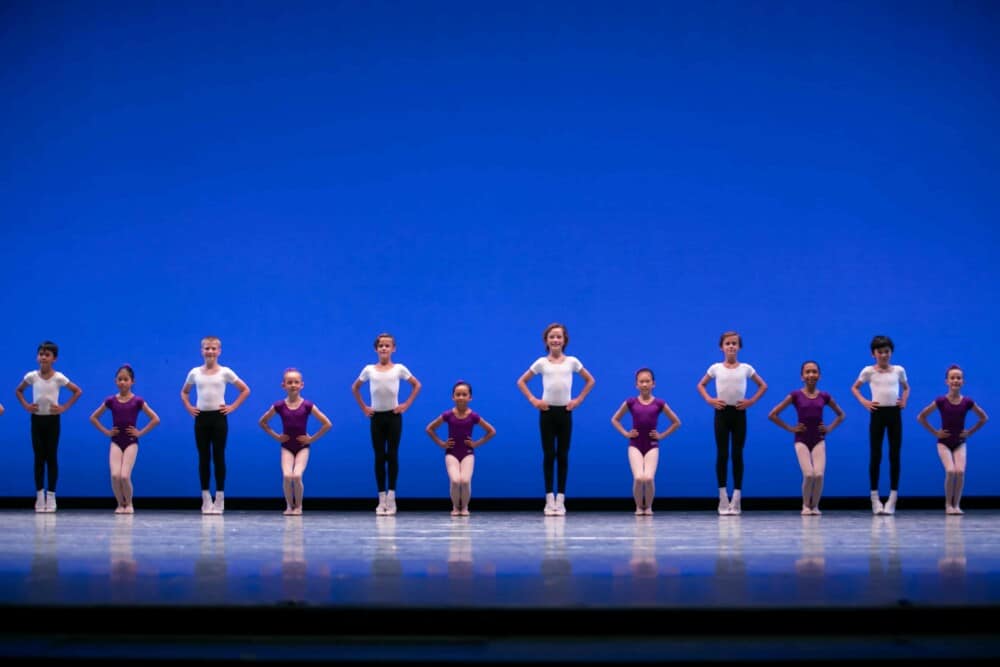
 “It was one of the best bread puddings I’ve ever made,” she says. “Columba Pasquale has a great texture for bread pudding, and the sliced almonds, candied orange peel, and brandy in the bread were great with the tart cherries.”
“It was one of the best bread puddings I’ve ever made,” she says. “Columba Pasquale has a great texture for bread pudding, and the sliced almonds, candied orange peel, and brandy in the bread were great with the tart cherries.”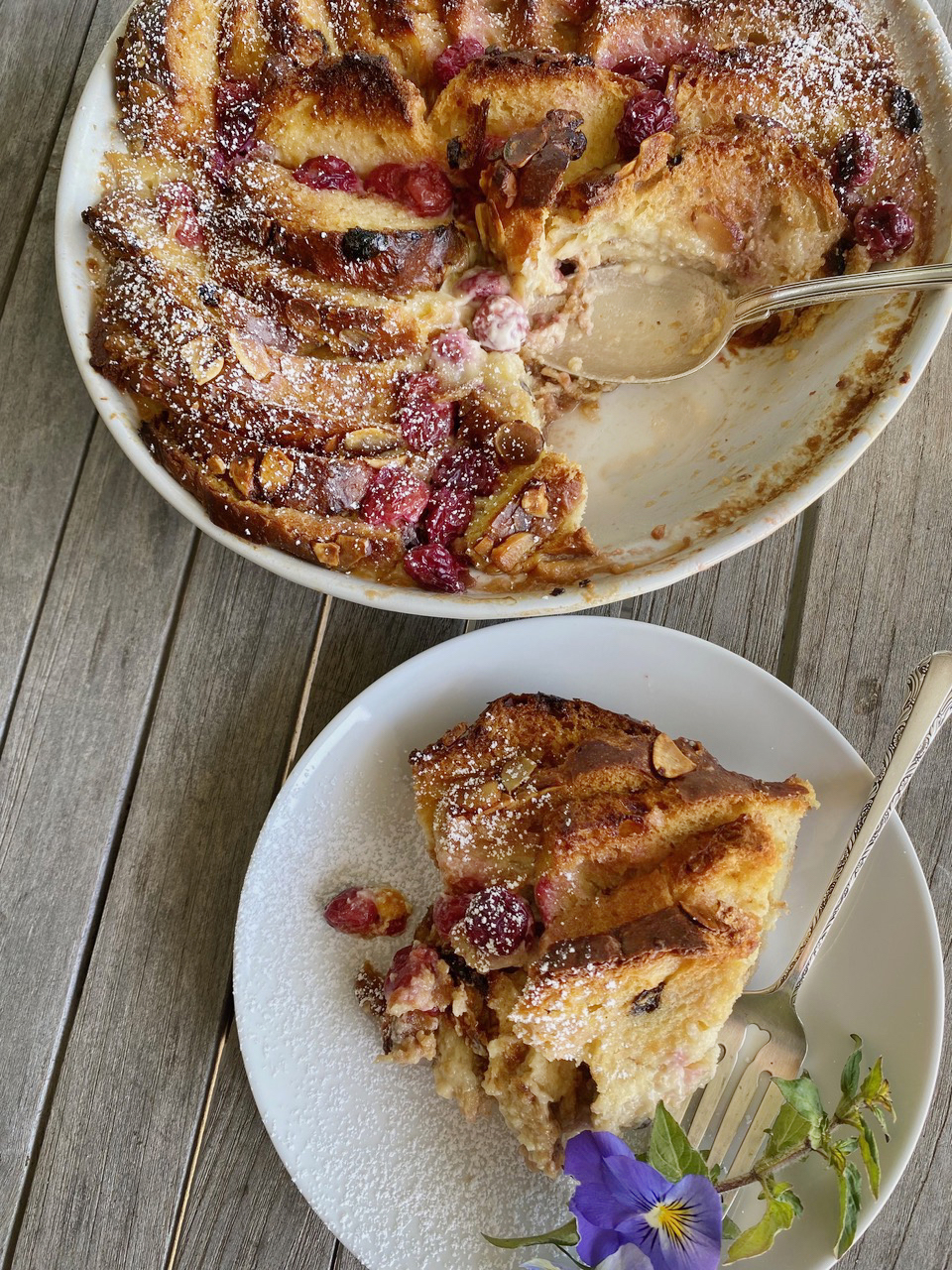
 Having lived in the North End of Boston for three years, I had the pleasure of frequenting some of the best Italian bakeries — the inspiration behind this tart. This rendition is adapted from a beloved recipe in our first cookbook. The Italian pasta frolla dough is versatile and straightforward to make. You’ll find yourself dreaming up other rustic tarts that it would serve well. My favorite filling combines rich ricotta cheese, dried cranberries, hazelnuts and bittersweet chocolate chips. However, feel free to swap out the dried fruit and nuts as whimsy or inspiration strikes. Fresh berries and a glass of Vin Santo make the perfect accompaniments to this lovely Italian tart.
Having lived in the North End of Boston for three years, I had the pleasure of frequenting some of the best Italian bakeries — the inspiration behind this tart. This rendition is adapted from a beloved recipe in our first cookbook. The Italian pasta frolla dough is versatile and straightforward to make. You’ll find yourself dreaming up other rustic tarts that it would serve well. My favorite filling combines rich ricotta cheese, dried cranberries, hazelnuts and bittersweet chocolate chips. However, feel free to swap out the dried fruit and nuts as whimsy or inspiration strikes. Fresh berries and a glass of Vin Santo make the perfect accompaniments to this lovely Italian tart.

